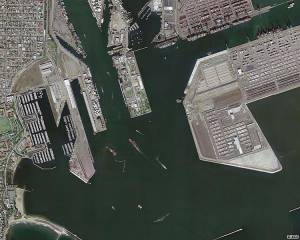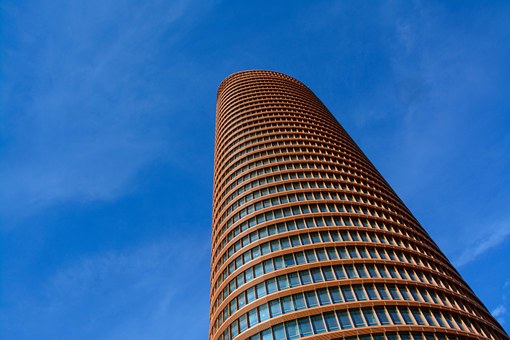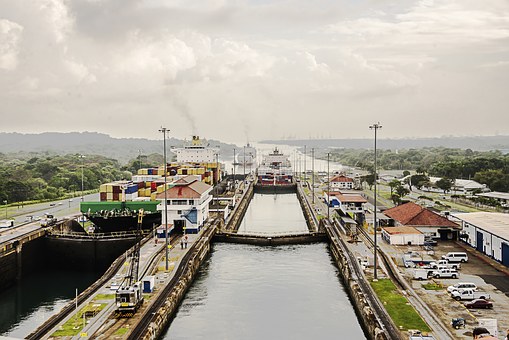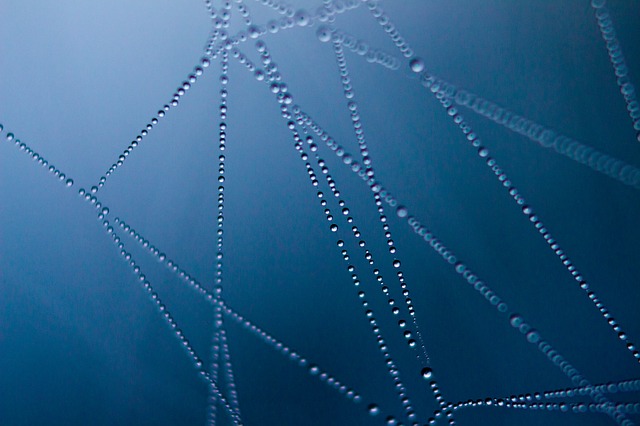It is not uncommon to see distinctions drawn between civil and environmental engineering projects. Preconceptions are regularly formed over what truly constitutes an environmentally friendly task, and these preconceptions rarely include the work of civil engineers. However, many engineering wonders exist primarily due to the interaction between these two disciplines. One such marvel, the Port of Los Angeles (POLA) Pier 400 container terminals, combines the understanding of civil engineering principles with environmental awareness to stand as the most immense dredging and landfill operation ever attempted in American waterways. When completed, the Pier 400 container terminal yard space will span 484-acres making it the largest single container handling facility in the world. As part of the 2020 Port Master Plan, Pier 400 is expected to generate nearly 59,000 new jobs and add $3.4 billion to the economy over the next 25 years. Yet, the inclusive Pier 400 project encompasses much more than mere economic benefits: the project also anticipates having a lasting environmental impact. By utilizing environmentally-conscious assembly methods and developing various mitigation projects, while maintaining the overall safety of Los Angeles Harbor, Pier 400 will surface as an unprecedented collaborative engineering accomplishment.
Introduction
Often, when we reflect on the civil engineering industry, construction and demolition immediately come to mind. The practice of civil engineering is rarely synonymous with ideas of environmental restoration or betterment. Rather, images of long spanning bridges, high rise buildings, or concrete factories epitomize the discipline. Some individuals have the preconceived idea that civil engineers tear down structures simply to put up new ones. As a result, civil engineers are often perceived as mere builders and destroyers. Thus, when civil engineers announced the prospect of dredging the Port of Los Angeles (POLA) for development purposes, red flags were quickly raised. Many questioned the necessity of dredging millions of cubic yards off existing shipping channel bottoms, and concerns arose regarding the development’s long term environmental impact. Such issues quickly became highly debated topics. However, once it was apparent that the survival of the POLA relied heavily upon the completion of these dredging operations, civil and environmental engineers collaborated to plan one of the largest port expansion projects in history. Together, they designed a container terminal facility whose economic advantages alone unarguably justify its existence.
The Port of Los Angeles Today
Currently, one out of every twenty-four southern California jobs originates from the Port of Los Angeles [1], yet the port’s contribution to society extends far beyond the southern California job market. Undoubtedly, every American is affected activities within the POLA. Imports such as automobiles, clothing, food, toys, and even toilet paper often enter through the port. In fact, it handles more than twenty-five percent of trade on the west coast, and POLA must constantly prepare to accommodate the increasing levels of international trade. To account for these projected boosts and keep the POLA as a competitive entity, engineers and port officials have initiated a channel-deepening plan that has evolved into the largest dredging and landfill operation ever attempted in American waterways. The project aims to increase channel depth for larger ships while maximizing the use of dredged materials to create a landfill now known as Pier 400 (Fig. 1).
Presently, the POLA container terminals service businesses like the Mobil Oil Corporation, American Presidential Lines (APL) Ltd., and Distribution & Auto Service (DAS) Inc. With the addition of Pier 400, port officials added the Danish shipping giant Maersk-Sealand to that list of primary container operators. By signing a 25 year contract, Maersk-Sealand has established itself as the pier’s exclusive customer, moving its principal container operations from the adjacent Port of Long Beach to Pier 400. As a result, Pier 400 will eventually become the largest single container handling facility in the world [2].
Design Considerations for Mega-Terminals
The Pier 400 container terminals will span 484 acres, thus qualifying it as a mega-terminal (a shipping facility with more than 300 acres of available land). At this size, Pier 400 could accommodate forty-eight buildings the size of the Staples Center or hold 366 football fields [3]. Because of its immense proportions, the Pier 400 design concept underwent extreme scrutiny.
Surprisingly, analysis determined that the design behind Pier 400 effectively suppressed wave actions and hence assured minimal effects on the existing Los Angeles Harbor complex.
Primary testing and modeling of the pier’s design was conducted by the US Army Corps of Engineers (COE) Engineering Research and Development Center (ERDC) in Vicksburg, Mississippi. ERDC’s Coastal Engineering Research Center (CERC) performed a water circulation study and found that wind conditions in the harbor have little or no impact on surface elevations but have significant effects on the velocities of water currents. Nonetheless, from their water circulation experiments, they also determined that the presence of Pier 400 produces a blocking effect on the velocity field, which actually forces the flow to conform to the platform’s landfill [3]. Furthermore, concerning harbor resonance, CERC evaluated harbor conditions with physical models and found the effects of Pier 400 on the existing berth locations to be negligible [4].
In regards to water quality, CERC engineers conducted tests by inserting a conservative tracer into regions of the harbor and monitoring its movement and dilution patterns. They concluded that water quality levels would remain nearly identical prior to and after the addition of the Pier 400 landfill [4].
Finally, as a precautionary measure, ERDC contracted out a ship simulation study to the Marine Safety Institute to analyze navigation safety and to recommend changes in channel configurations. A number of these suggestions were accepted and are noted in the final design scheme. The findings of the investigation deemed the peer’s design fit for construction.
Constructing a Better Environment
Aware that engineers are often criticized for overlooking environmental interests, Pier 400 designers made deliberate efforts to minimize ecological destruction during the construction process. As a preventative measure, Port officials established a contract that required that the majority of dredging be done by electric means. The largest cutter suction dredge operating in the United States, the electric-powered Florida, was selected as the primary dredging instrument. Fifty-four million cubic yards of soil was extracted from the existing shipping channels and routed to the Pier 400 submerged landfill site via a narrow pipe that spanned lengths as long as 3.6-miles during some parts of the operations [5]. By mandating the employment of electric-powered dredges like the Florida, a significant reduction in air emissions occurred. In general, electric-powered dredges produce 90% less air emissions than diesel-powered dredges. Thus, by limiting the use of diesel-powered operating mechanisms, engineers assured that the negative effects on air quality were nominal.
In another attempt to suppress pollution, engineers recommended the development of an on-site concrete plant. By generating concrete at the site of the submerged landfill, the number of long trips from offsite locations was significantly reduced. Consequently, the transportation corridor connecting Pier 400 to the rest of the Los Angeles Harbor complex was similarly constructed while keeping air emissions at a minimum [5].
Retaining dikes were erected to contain the volume of recently dredged material and to protect the landfill’s perimeter. Nearly 10 million metric tons of quarry rocks were transported over to the POLA from beaches on Santa Catalina Island to construct these essential barriers. Rocks were acquired from Santa Catalina Island to keep transportation costs and environmental impact minimal. Unbelievably, the overall amount of quarry rock used in construction totaled 11 million metric tons: a number 25 times larger than required to create Mt. Rushmore (Hurme 22). If the majority of these rocks had been obtained from remote locations, the air emissions generated from transporting these boulders would have been considerably large. Furthermore, the sheer cost to move the materials would have been enormous; for that reason, engineers utilized available resources to reduce both the monetary cost and the environmental effects that the construction of the dikes might have caused.
Environmental Mitigation Ventures
Beach Restoration and Wildlife Preservation
In order to mollify environmentalists and justify the massive dredging operations, environmental engineering feasibility studies were conducted and proved useful in proposing concurrent mitigation projects. In one effort to improve the environmental impact of the project, the COE and the POLA selected the Batiquitos Lagoon at Carlsbad in Northern San Diego County as a restoration site. With the support of the California Department of Fish and Game, the U.S. Fish and Wildlife Services, and the National Marine Fishery Services, they embarked on a 600 acre environmental restoration project. The Pier 400 mitigation crew spent $55 million to reopen the inlet to Batiquitos Lagoon in an attempt to restore water quality, to improve wildlife habitats, and to reestablish land in and around the lagoon that has been destroyed by human activities over the years [5].
Similarly, though more controversially, the COE and the POLA developed a beach inlet initiative to enhance the wildlife habitat at the Bolsa Chica wetlands. In this 900 acre restoration project, the most expensive wetland restoration project in southern California history, engineers fought to allow tidal flow into the wetlands for the first time in over a century. By allowing tides to flow into the Bolsa Chica wetlands, hundreds of shorebirds and marine life would regain access to the natural environmental conditions that had previously existed. Without this interagency restoration project, the pools would remain too shallow and too warm to support many species of ocean fish.
Likewise, collaborative effort was needed to ensure that the welfare of the endangered California Least Tern was kept in mind while developing Pier 400. Since the 1980’s, the POLA has maintained an annual nesting site for this Federal and State endangered species. By grading, removing vegetation, placing decoys, and providing chick shelters, the port has been able to safeguard the lives of these small seabirds. In an effort to continue protecting the California Least Tern, a 15 acre site at the southeast corner of Pier 400 was declared a designated nesting site in 1997. Evidenced by reproductive growths in just a short period of time, this joint venture is justifiably considered an environmental success [5].
Disposing Concerns Create Wetlands
Engineers next needed to tackle the concerns surrounding the disposal of materials deemed unfit for use in the pier development. They proposed a solution that both suppressed worries and provided environmental gains. When previous field testing verified the existence of materials with unsuitable engineering qualities such as silts, clays, and mudstones, engineers proposed a permanent shallow water habitat near the San Pedro breakwater [3]. The site, more commonly known as the Cabrillo Shallow Water Habitat, became the location of an expansion project that utilized the unacceptable, fine-grained materials dredged from existing shipping channels. As result, more species of fish can dwell in the outer regions of the Los Angeles Harbor, leading to a greater abundance of food for dive feeding birds. In this project, engineers were not only able to safely dispose of the undesirable materials, but they were also able to assist the POLA ecosystem by enlarging an existing shallow water habitat zone.
Conclusion
Engineers were challenged with a task to modernize the POLA and uphold its standing as one of the leaders in world trade while showing sensitivity to the environment. Their answer to this challenge was Pier 400, an engineering feat that is expected to keep the POLA current until the year 2020. Along with 20 buildings and 18 towering cranes came the restoration of wetlands ranging in locations from the outskirts of the Los Angeles Harbor to San Diego County.
Though some still contest the validity of Pier 400’s environmental betterment claims, it is clear that designers made an effort to combine their knowledge of civil engineering principles with environmental practices throughout the duration of the project. After eight years of dredging and compaction, Pier 400 stands as one of the largest artificial structures ever attempted, replacing one fourth of the water located in Los Angeles Harbor. Alone, Pier 400 is expected to move 2.4-million containers annually, which is half the number currently moved by the entire harbor. Additionally, the container terminal facility is anticipated to have a nationwide impact of $3.4 billion, including the creation of nearly 59,000 new jobs [6]. In comparison to the $480 million projected total construction cost, Pier 400 can be viewed as one of the greatest engineering accomplishments of the 21st century.
Without the input of civil and environmental engineers, we construction of Pier 400 would never have been realized. The stability and security issues tackled by civil design engineers and the mitigation suggestions and construction methods offered by environmental engineers have resulted in yet another unparalleled engineering achievement. As a direct result of the cooperation between the engineering disciplines, Americans will continue to receive products shipped into our nation through a modernized container handling facility.





